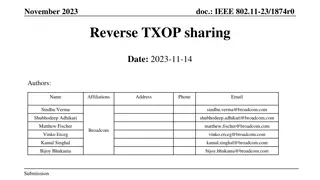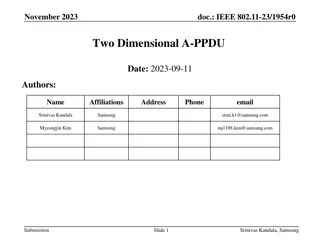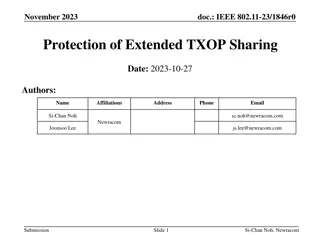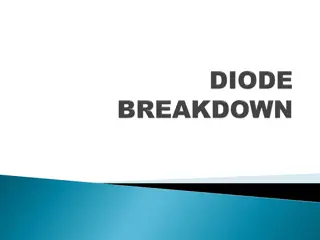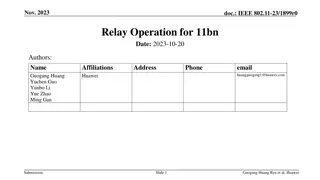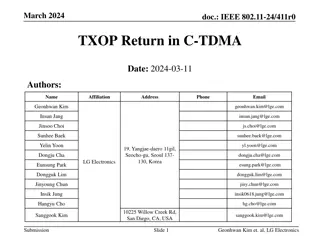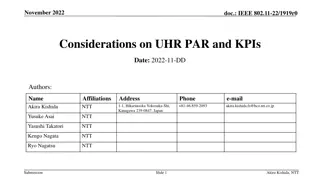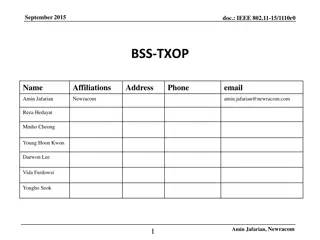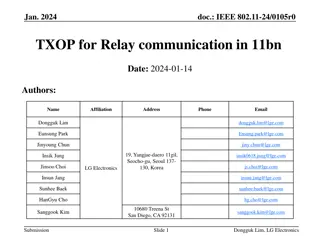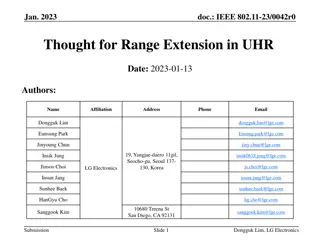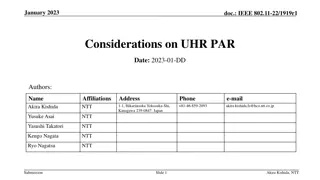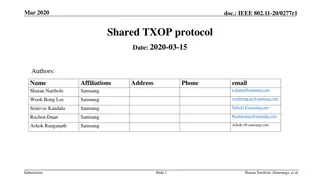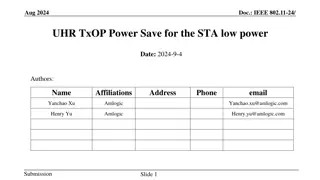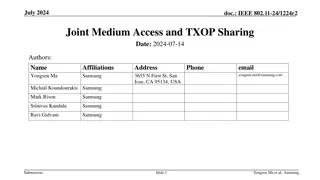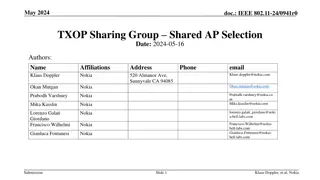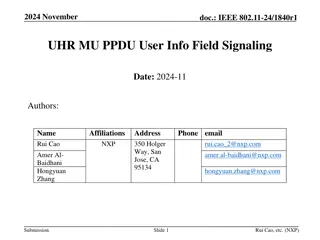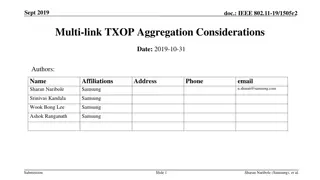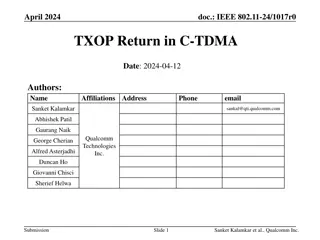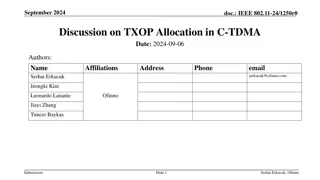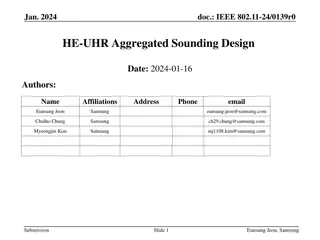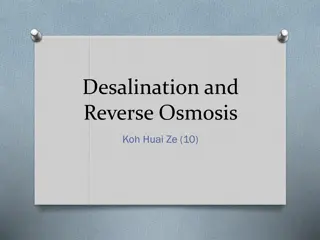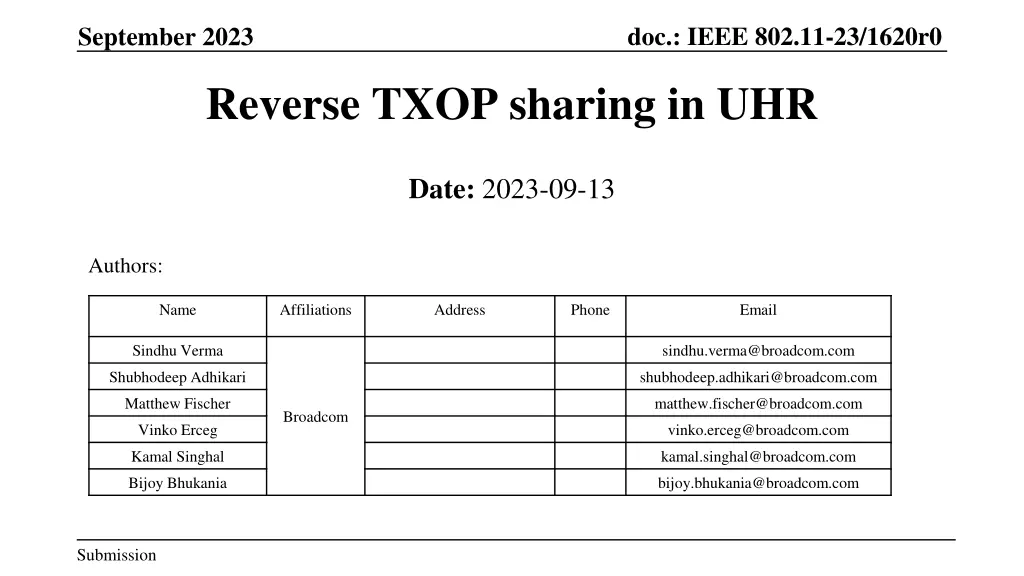
Reverse TXOP Sharing in IEEE 802.11 - Benefits and Mechanism
This contribution explores the benefits and mechanism of Reverse TXOP Sharing in IEEE 802.11, enabling non-AP STAs to share acquired TXOP with APs for efficient handling of downlink and uplink traffic. The proposed solution addresses existing limitations in TXOP utilization and channel access, providing a detailed analysis of the problem statements and solutions.
Download Presentation

Please find below an Image/Link to download the presentation.
The content on the website is provided AS IS for your information and personal use only. It may not be sold, licensed, or shared on other websites without obtaining consent from the author. If you encounter any issues during the download, it is possible that the publisher has removed the file from their server.
You are allowed to download the files provided on this website for personal or commercial use, subject to the condition that they are used lawfully. All files are the property of their respective owners.
The content on the website is provided AS IS for your information and personal use only. It may not be sold, licensed, or shared on other websites without obtaining consent from the author.
E N D
Presentation Transcript
doc.: IEEE 802.11-23/1620r0 September 2023 Reverse TXOP sharing in UHR Date: 2023-09-13 Authors: Name Affiliations Address Phone Email Sindhu Verma sindhu.verma@broadcom.com Shubhodeep Adhikari shubhodeep.adhikari@broadcom.com Matthew Fischer matthew.fischer@broadcom.com Broadcom Vinko Erceg vinko.erceg@broadcom.com Kamal Singhal kamal.singhal@broadcom.com Bijoy Bhukania bijoy.bhukania@broadcom.com Submission
doc.: IEEE 802.11-23/1620r0 Abstract This contribution discusses the benefits and mechanism for Reverse TXOP Sharing i.e. allowing a TXOP acquired by a non-AP STA to be shared with an AP and further, allowing the AP to utilize the shared TXOP for carrying appropriate Downlink and Uplink traffic Submission Slide 2
doc.: IEEE 802.11-23/1620r0 Problem Statement (1) During normal operation in 802.11, only an AP can share its TXOP with its clients in the following manner: 11ax onwards, using Triggered allocations for Uplink transmissions 11be onwards, using TXS Mode 1 for SU Uplink transmissions and TXS Mode 2 for P2P- like transmissions In certain scenarios, such sharing by the AP is beneficial in reducing channel access attempts and collisions at the clients to transmit UL data. In other scenarios where there is significant OBSS congestion, it is beneficial to keep the clients contending for channel access so that the BSS in question gets a commensurate share of the medium. However this entails the following problems: Each client can utilize its TXOP only for its own Uplink transmissions There is no mechanism to share the unutilized portion for Downlink data and Uplink data corresponding to other clients even if there is pending latency-sensitive/control traffic Submission Slide 3
doc.: IEEE 802.11-23/1620r0 Problem Statement (2) There can also be cases where the AP is unable to win channel access or when it wins access, it is not aligned with the availability of idle medium at the client i.e. there may be hidden node issues at the client which would make it more optimal for the client to be the initiator of TXOPs For these reasons, it is beneficial to have a scheme that allows a TXOP acquired by a non-AP STA to be shared with an AP and further, allows the AP to utilize the shared TXOP for carrying appropriate Downlink and Uplink traffic The Reverse Direction (RD) protocol allows TXOP sharing between an RD Initiator and Responder, where the Initiator can be a non-AP STA. However, the protocol allows only a limited version of such TXOP sharing. For example, the RD Responder (say an AP) can transmit data only to the RD Initiator (say a non-AP STA) and inclusion of traffic to other STAs can only be done in an MU-MIMO fashion and without extending the duration of transmission to the RD Initiator. Submission Slide 4
doc.: IEEE 802.11-23/1620r0 Proposed Solution In UHR, a non-AP STA can be required to share its TXOP with the AP optionally after utilizing it for its own transmission or mandatorily The full duration or remainder of this TXOP can be shared with the AP The indication to the AP will consist of the remaining duration as well as the AC with which the TXOP was acquired In this TXOP acquired and shared by a non-AP STA, the AP can prioritize low latency control/data to any non-AP STAs. It can also schedule corresponding UL transmissions from non-AP STAs. It can also transmit or schedule other data depending on the AC with which the TXOP was acquired TXOPs can be shared between STAs in different BSSs via inter-BSS coordination. SIFS gap is mandated between consecutive transmissions with the option of PIFS-based recovery Submission Slide 5
doc.: IEEE 802.11-23/1620r0 Benefits of the Proposed Solution The proposed solution allows the non-AP STAs to contend for channel access and share the resources with the AP for better QoS management across the BSS: The AP can prioritize latency-sensitive and control traffic The AP can manage fairness between Downlink and Uplink traffic as well as among multiple non-AP STas It also allows efficient utilization of TXOPs and less idle time in the medium (due to channel access gaps between shorter transmissions from individual non-APs) It allows the BSS to continue to have a commensurate share of the medium while having the advantages of scheduled access It allows management of hidden node situations where the non-AP may have better visibility of the Downlink interference situation and hence, can poll for Downlink transmissions Submission Slide 6
doc.: IEEE 802.11-23/1620r0 Conclusion Reverse TXOP sharing has the following advantages Efficient resource utilization: bandwidth efficiency Low latency and control traffic prioritization QoS management Mitigation of hidden node issues The 802.11 specification changes required in UHR are minimal. They can simply be an extension of the 11be TXS modes 1 and 2. Submission Slide 7
doc.: IEEE 802.11-23/1620r0 References [1] IEEE P802.11be [2] 11-20-0005-01-00be-Proposals on Latency Reduction /D4.0 Submission Slide 8

